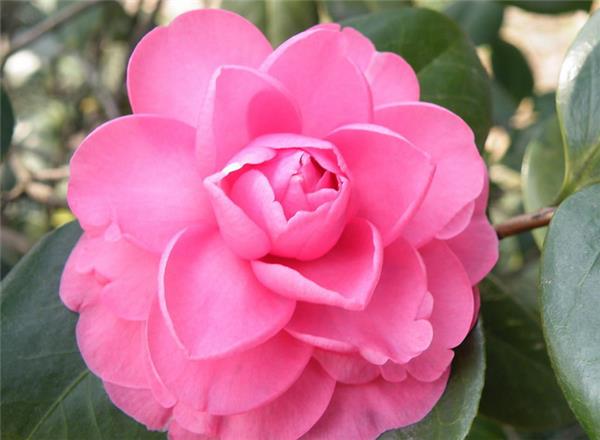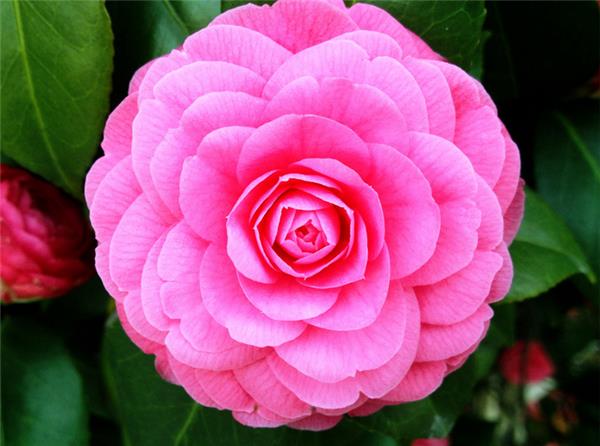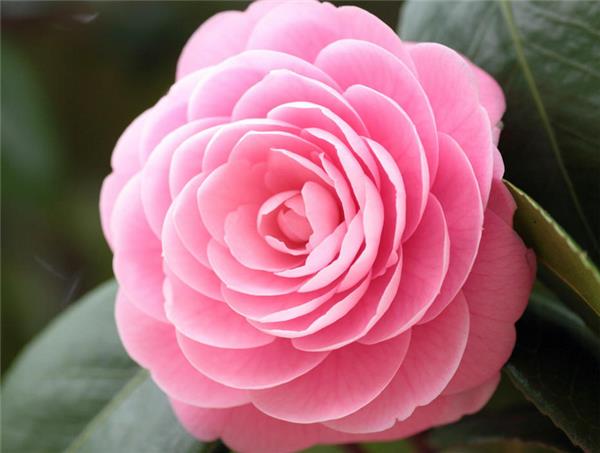Propagation methods of Camellia
Camellia has a beautiful crown, bright green leaves, large and colorful flowers, and a long flowering period, coinciding with New Year's Day and Spring Festival flowering, so what are the propagation methods of camellia?

Propagation methods of Camellia
The propagation methods of camellia are as follows: cutting, grafting, striping, sowing and tissue culture.
Cuttage propagation: it is the most suitable around the middle of June and the end of August. The semi-mature branches of the same year with full external tissue, intact leaves and full leaf buds were selected as cuttings, with a length of 8-10 cm and 2 leaves at the apex. When cutting, the base takes a little old branch as far as possible, it is easy to form callus after insertion, and the root is fast. When the cuttings are cut in the morning, they should be inserted as soon as they are cut, and the matrix is about 3 cm. When cutting, the leaves are required to hand over each other, and then press with your fingers. It is better to insert it shallowly, so that it can heal and take root quickly. The inserting bed should be shaded, spray the leaf surface every day, keep it moist, keep the temperature at 20: 25 ℃, heal about 3 weeks after insertion, and take root after 6 weeks. Transplant into the pot when the root is 3 to 4 meters long. Dipping 0.4% 0.5% indolebutyric acid solution into the base of the cuttings for 2-5 seconds can obviously promote rooting.

Grafting propagation: it is often used for varieties with difficulty in rooting or few breeding materials. The survival rate of grafting was the highest when the new shoots were semi-qualitative from May to June, and the shoots sprouted quickly after grafting. The rootstocks are mainly Camellia oleifera, which are collected in October, stored in winter and sown in early April of the following year. When the seedlings grow to 4-5 cm, they can be used for grafting. Using the method of tender branch splitting, cut off the germ of the rootstock with a blade, cut it longitudinally along the pith in the center of the cross section of the Hypocotyl, then take a section of the scion of Camellia and cut the base under the node into a positive wedge, immediately insert the cut scion into the bottom of the crack of the rootstock, aim at the cambium on both sides, bind it with cotton thread, and cover it with a clean plastic pocket. Remove the pocket after about 40 days, and sprout in about 60 days.
Striping propagation: strong 1-year-old branches are selected in the rainy season, 20 cm from the top, peeled in a ring, 1 cm wide, bound with rotten leaf soil and wrapped with plastic film, take root after about 60 days, cut off can be directly potted, the survival rate is high.

Sowing and propagation: suitable for single or semi-double varieties. The seeds are ready for sowing when they mature in the middle of October. Shallow sowing was better, vermiculite was used as substrate, covering 6 mm, room temperature 21 ℃, light for 10 hours per night, it could promote seed germination, and began to germinate 15 days after sowing. The seedling height reached 8 cm within 30 days, and the seedlings were transplanted when they had 2 or 3 leaves.
Tissue culture and propagation: the common seedlings of explants were cut into 1 cm long after routine disinfection and inoculated on MS medium supplemented with kinetin 1mg / L, 6-benzylaminoadenine 1mg / L and indole acetic acid 0.1mg / L. After 4 weeks of culture, only calli were formed, but no buds were formed. After transferred to the new medium, a single branch of 4 cm was formed, then soaked in 0.5mg / L indolebutyric acid solution for 20 minutes, then transferred to 1/2MS medium, and roots grew after 4 weeks. After growing on long root medium for 8 weeks, the seedlings were transplanted to a basin filled with perlite and peat.

Let's take a look at the cultivation and management of camellia.
Camellia flower pots are often planted in 15-20 rice pots. Camellia root system is fragile, transplanting should be careful not to hurt the root system. Potted camellia, change pots after blooming in spring or September to October every year, cut off only long or dead branches, and replace them with fertile rotten leaf soil. Camellia likes to be moist, but the soil should not be too wet, especially potted plants, which can easily cause rotten roots. On the contrary, impermeable irrigation, too dry, leaves curling, will also affect the development of flower buds.
After changing the pot of camellia in spring, there is no need to apply fertilizer immediately. During the vigorous growth period of stems and leaves after the beginning of summer, fertilize once a month or use "Huiyou" 21 Mel 7 Mel 7 acid fertilizer. From budding to flowering in September, the phosphorus and potassium fertilizer was applied twice. Camellia begins to form flower buds in late summer and early autumn. One or two buds should be left on each shoot, not too many, so as not to consume nutrients and affect the flowering of the main buds. Pay attention to the position of leaf buds when picking buds in order to keep the plant shape beautiful. At the same time, the dry waste buds are easily removed.
Related
- Wuhan Hospital Iron Tree Blooming Result Was Instantly Frightened by the Gardener Master
- Which variety of camellia is the most fragrant and best? Which one do you like best?
- What is the small blue coat, the breeding methods and matters needing attention of the succulent plant
- Dormancy time and maintenance management of succulent plants during dormancy
- Minas succulent how to raise, Minas succulent plant pictures
- What are the varieties of winter succulent plants
- How to raise succulent plants in twelve rolls? let's take a look at some experience of breeding twelve rolls.
- Attention should be paid to water control for succulent plants during dormant period (winter and summer)
- Watering experience of twelve rolls of succulent plants
- Techniques for fertilizing succulent plants. An article will let you know how to fertilize succulent plants.



